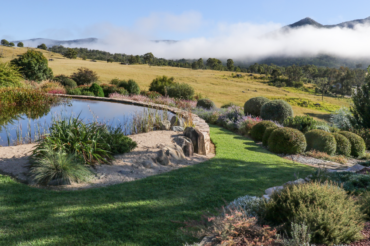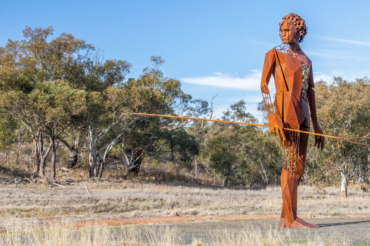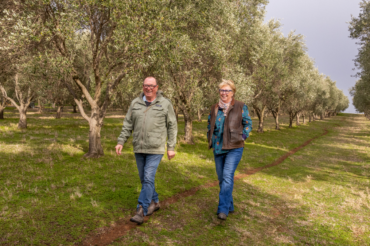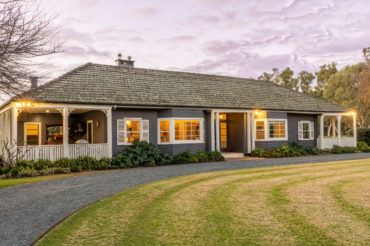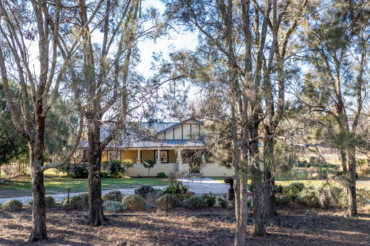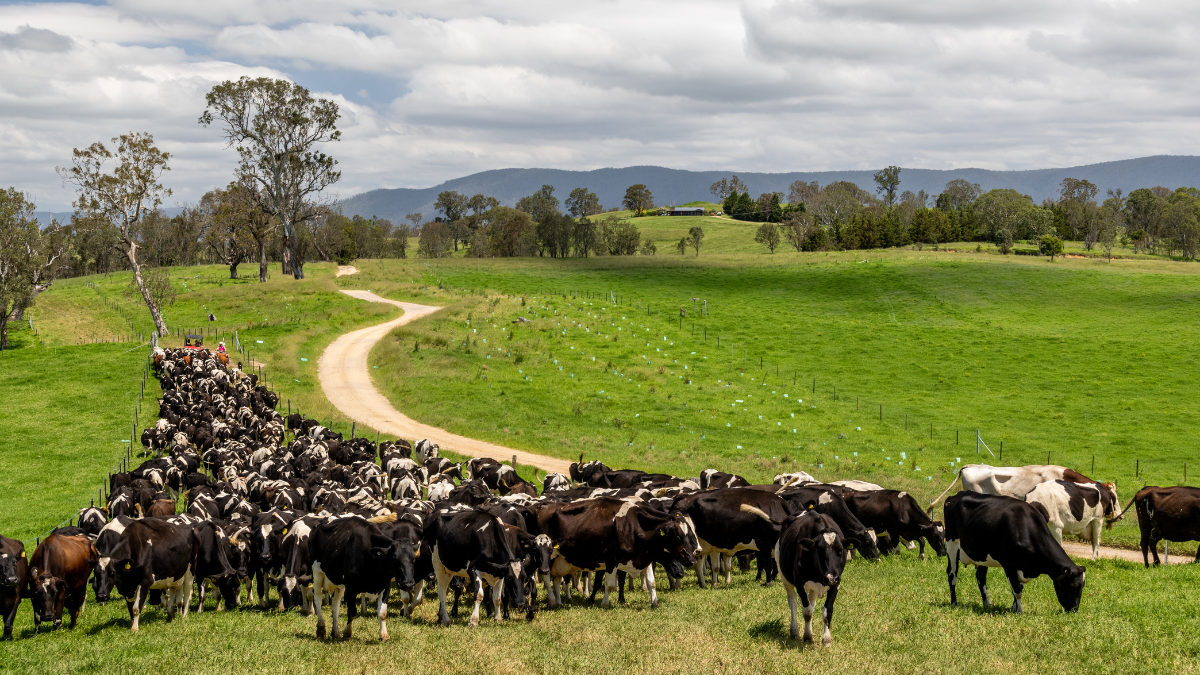
The Sapphire Coast sparkles year-round and rewards visitors with time to explore its beautiful beaches and bounty of local produce.
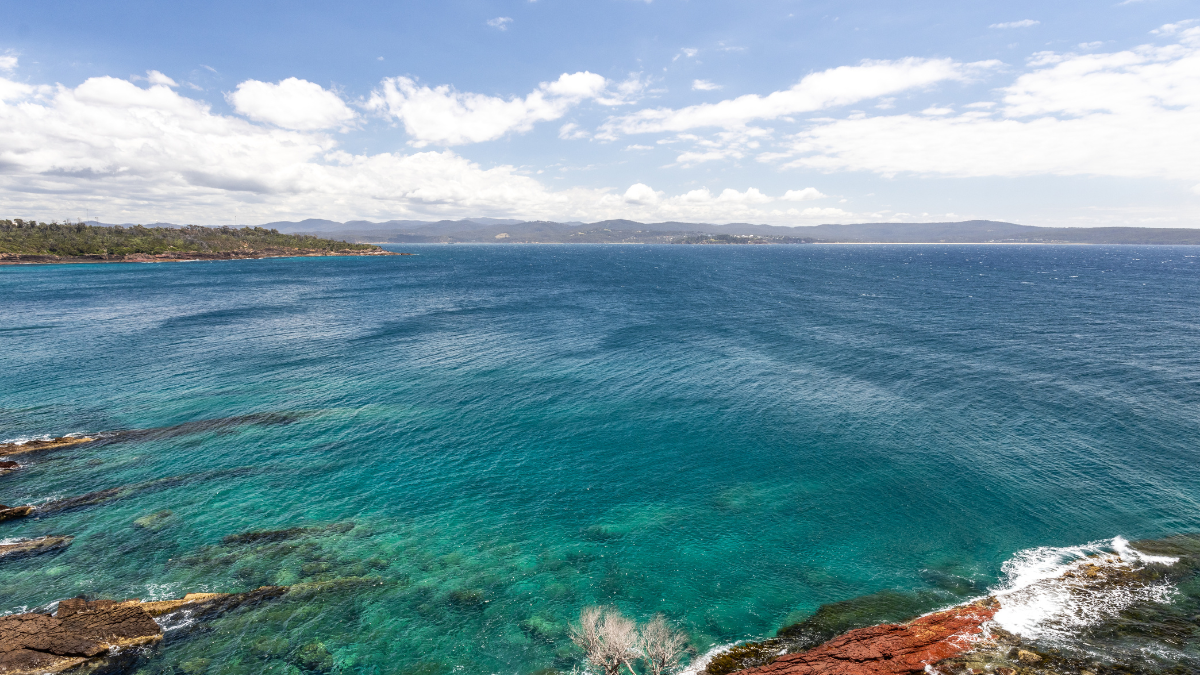
It’s early morning on a public holiday in Tathra, NSW, but that doesn’t deter a group of dedicated ocean swimmers, who’ve decided to take the leap from the historic wharf to swim the 600-or-so metres to the golden swoop of Tathra Beach. The less adventurous might prefer to complete the swim in the opposite direction and climb the ladder up to the deck rather than jump into the azure waters of the aptly named
Sapphire Coast of southern NSW. There’s even an annual 1200m Wharf to Waves event in March, when hardy souls swim from the beach to the wharf and back.
Fainter hearts can still enjoy a visit to the wharf, which has been a landmark on Tathra’s headland since it was first constructed in 1862. It’s been much renovated over the years and is a great spot for whale watching during the migration season (August to November), fishing at any time, catching up on maritime history at the Tathra Wharf Museum and grabbing coffee and a bite at The Wharf Local café.

Established around the same time as the wharf, Tathra township’s main purpose was originally as a seaport for the farming community around Bega. In those days, everything was transported by ship. When steamers replaced sailing ships, the voyage to Sydney became safer and more reliable and opened the door to holidaymakers, initially fisherfolk who built weekenders, while later well-to-do farmers and Snowy Mountains Authority staff from Cooma built more substantial beach houses. As car travel became more mainstream, Tathra became a popular camping destination and the town’s population of 1700-odd swells dramatically at Easter and during the summer holidays.
Most visitors to Tathra also find their way to the Heritage-listed Tathra Hotel, perched on the other side of
the headland from the wharf. The pub, built in 1888 as the Ocean View Hotel, lives up to its original name, with jawdropping views over the Pacific Ocean. These days, you’d visit for the breakfast, lunch and dinner options seven days a week, the heritage rooms upstairs or the adjacent motel rooms, the fact that the boutique Humpback Brewery is also located on-site and, mercifully, the lack of pokies. Be sure to take a trip to the loo for the Max Dupain photographs in the corridor and the fascinating insights into war-time society life from the framed pages of The Sun newspaper.
The gateway town to this road trip along the coast is Bega, almost midway between Sydney and Melbourne on the Princes Highway. It would be easy to dismiss Bega, population circa 5000, as an agricultural service town, but visitors who take a closer look are rewarded with insights into the history of dairying in the Bega Valley and tastings of Bega’s famous cheese at the Bega Cheese Heritage Centre in a reproduction of the original creamery building. The Spiral Gallery is a cooperative presenting local artists’ works, while the South East Centre for Contemporary Art (SECCA) has schmick premises in the centre of town and hosts touring and individual artists’ exhibitions, as well as the biennial $50,000 Shirley Hannan National Portrait Award.

It’s an 18-kilometre hop from Bega to Tathra and while a detour to the village is highly recommended, the turnoff for the Sapphire Coast Drive to Merimbula and Pambula is 4km before Tathra. From there, it’s about 20km to Merimbula and a further 11km back to the highway and down to Pambula. Don’t let the distances deceive you, there are pristine beaches and eye-squintingly blue waters tempting swims at Bournda, Tura and Pambula Beaches that are bound to stretch the schedule. There’s also a 10km shared bike and walking pathway from Merimbula to Pambula that hugs the lake’s edge and then Merimbula Beach before ending at Pambula Beach.
The region is renowned for its seafood in general and Sydney rock oysters in particular and, for deeper insight into the realm of oyster farming, visitors can join ‘‘Captain Sponges’’ Brett Weingarth or his off sider Captain Scotty Cowdrey on a two-hour boat tour of the leases they maintain on Merimbula and Pambula Lakes. While you take a crash course in oyster husbandry, you’ll get to taste them at their freshest as the hosts shuck them straight from the water. There’s also a detour to inspect the native Angasi species of oyster, also grown on the farm.

There are myriad other opportunities to buy oysters straight from the farms dotted along the coast and one that comes highly recommended is Wheelers Oyster Farm, which combines a seafood restaurant and snapping-fresh fish and chips and oysters to take away or enjoy at tables under umbrellas out the back. In Pambula, grab a pie or pastry and a coffee from Wild Rye’s bakery or drop into Longstocking Brewery for pizza and beer. For more formal dining, the hatted Banksia Restaurant offers set menus featuring local produce in an old bank building. From Pambula, it’s 19km down the Princes Highway to Eden, on the northern end of Twofold Bay and a fishing and whaling port since the earliest days of European settlement.
There’s much to learn about the grisly, though fascinating, stories of the whaling industry and the unsuccessful vision of 1840s’ banker and entrepreneur Benjamin Boyd to build Boydtown, which he ‘‘modestly’’ named for himself as the headquarters of his whaling business. Today, all that is left of his grand dream is the Seahorse Inn, a pleasant spot for a meal with a sea view, and Boyd’s Tower, an imposing sandstone structure that was designed, though never used, as a lighthouse, but did become a key lookout for whalers to spot passing whales. Drop into Eden’s Killer Whale Museum to learn more about the industry, which in colonial times supplied whale oil for lighting, lubrication and soap manufacture and baleen for women’s corsetry, hooped petticoats, umbrella ribs and riding crops. Fun fact: Although it was known as whalebone, baleen is actually dried tough skin.

The 6.7m-long skeleton of Old Tom is one of many features of the museum and visitors will gain insight into how the leader of the orca whale pod collaborated with three generations of the Davidson family of whalers, they claimed, for almost 90 years. In fact, the extraordinary hunting partnership of wild animals with man herding baleen whales goes back way before European settlement, as the traditional owners, the Yuin people, also worked with the orcas to capture baleen whales. The orcas, aka ‘‘the killers of Eden’’, were said to alert whalers to the approach of their prey by tail flopping and then guiding the boats to the locations. It’s said Old Tom collaborated with the Davidsons because they knew the tradition of “the law of the tongue”. This involved anchoring the dead whales close to the shore and leaving them for a couple of days so the orcas could feast on their favourite tidbits — the tongue, lips and genitals — before dragging them back to their whaling station, which, when it closed in 1929, was the longest-operating land-based facility in Australia.
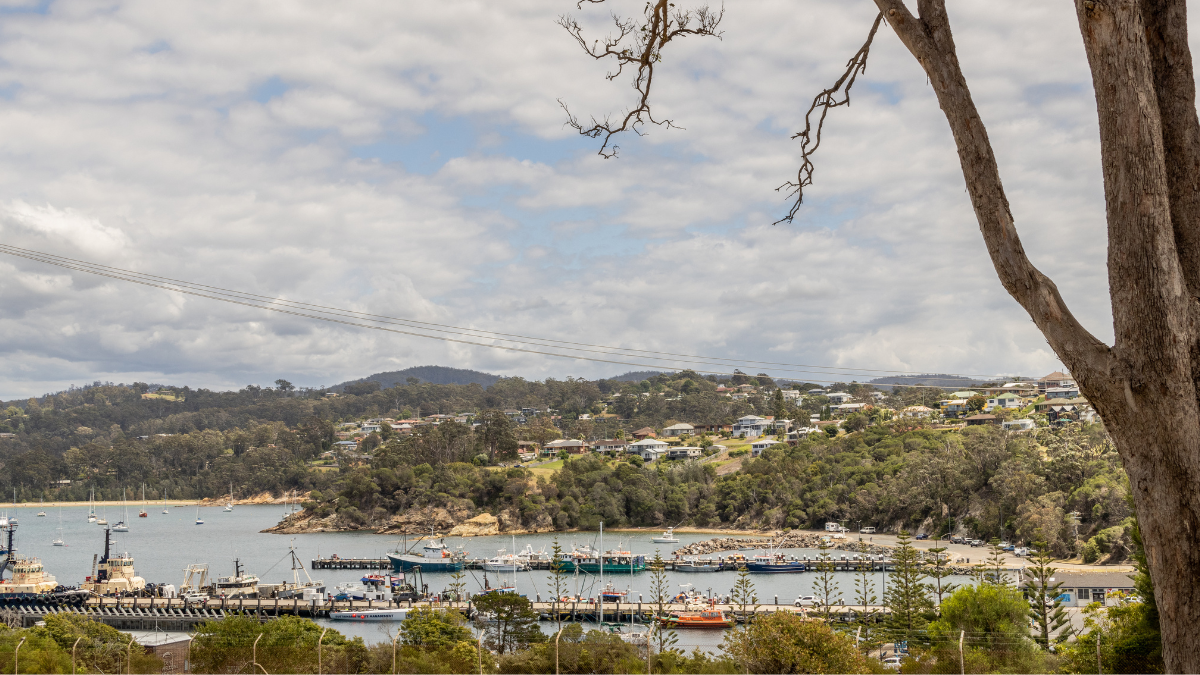
If that gives you a taste for more whaling history, head south around the bay to visit the Seahorse Inn, the remnants of the Davidson Whaling Station and Boyds Tower. Boyds Tower is also the starting point for the 32km Light to Light Walk, which follows the coastline to Green Cape Lighthouse, the most southerly lighthouse in NSW.
Returning to Eden, take a walk around the fi shing boats and Visitor Information Centre at Snug Cove, before grabbing a bite at the Hotel Australasia’s Pikes Bistro. From there, it’s a 54km drive up the highway back to Bega. If you happen to be there on a weekend, be sure to drop into the North of Eden craft gin distillery, a boutique facility run by Gavin Hughes, who can claim to be one of very few distillers in the country using Australian-grown juniper from a farm at Bibbenluke on the Monaro high plains. It would be hard to imagine a more fitting place to toast the unique character of this region and the people who colour in its details.




